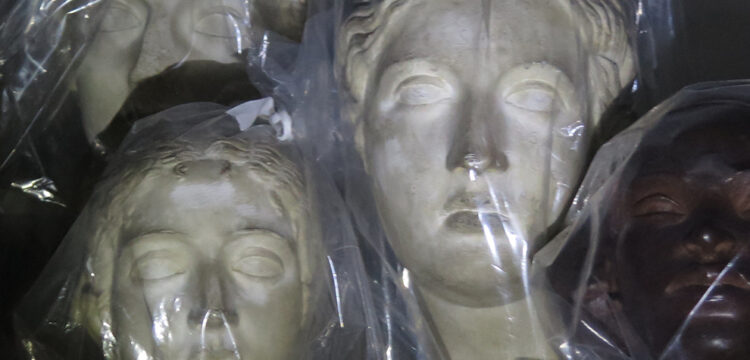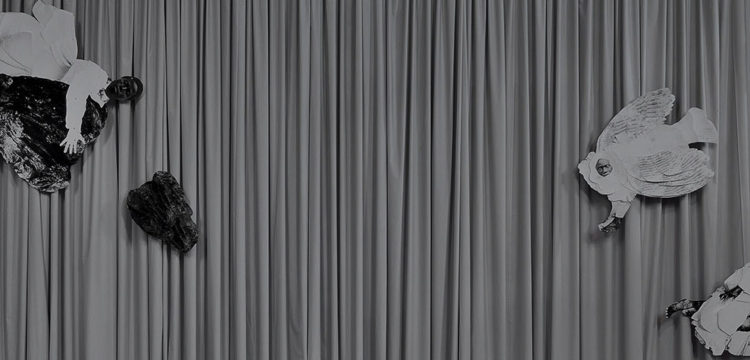Italian Black Histories
“Minted in Enemy Bronze” at the British School at Rome
Opening on November 8th 2023 at the British School at Rome, Minted in Enemy Bronze represents the premiere of a decade-long film based journey by artist Justin Randolph Thompson. The research for this exhibition was funded in part by an Italian Council grant in 2021, with chapters of the film Al Lettore Benevolo presented at Museo MADRE in Naples in 2022 and They Remain at MUCEM in Marseille in 2023, and is the first institutional solo project by Thompson in Italy. The exhibition presents a dozen films dedicated to the excavation of Black histories in Italy developed through dialogues and exchanges with Black scholars, artists and activists at sites resonant with atmospheric tension.
The exhibition was developed across the past two years with Thompson as Research Fellow at the British School at Rome. As co-founder and director of Black History Month Florence and The Recovery Plan, the project is embedded with an elaboration of the methodologies, research and histories that are the foundations of these cultural hubs dedicated to the centering of Blackness in Italian history.
The exhibition is accompanied by a series of texts by Antonella Bundu, Thelonious Stokes, Janine Gäelle Dieudji, Daphne Budasz, Jermay Michael Gabriel, Antar Marincola, Tatjana Lightbourn, Jason Thompson, Sadi, Dudù Kouate, Angelica Pesarini, Bradly Dever Treadaway. The texts are conceived as open, ongoing and incomplete conversations, each text is an open reflection on the film and the experience of the development of the work or the extended research that inspired it. Here a text by Jermay Michael Gabriel, and one by Justin Randolph Thompson.
“History is the version of past events that people have agreed to accept.”
Napoleone Bonaparte
Justin Randolph Thompson’s practice gives life to an artistic research that focuses on the redefinition of Italian narrations through a profound re-elaboration of past and contemporary history.
This search for this type of history is embedded with a complex reflection on tellings and images that continue to symbolise a hegemonic narrative, often intertwined with oppressive elements that impact the contemporary identity of Afro-descendants in their pluralities.
The act of deconstructing these symbols is a central aspect of his work.
The reinterpretation of these symbols constitutes a form of resistance to oppression and an attempt to crumble the pre-existing narrative that has a tendency to stifle individual freedom.
This action inevitably leads to a re-narration of these elements, an intricate and multifaceted process that constitutes the core of this exhibition.
The urgency of self-determination and agency emerges as a central theme of Thompson’s work.
Agency in this context is considered an act of resistance against the homologation and control imposed by a dominant narrative, and through this practice we explore this urgency with actions indebted to re-signification. The actions are not episodic but developed in continuities, a cycle of destruction and rebirth that highlights the irreducibility of coloniality within works of art.
This art, this research challenges the dominant concept of history and foregrounds the complexity of contemporary Italian identity.
Thompson’s practice offers an opportunity to reflect on the power of personal narrative in affirming individuality in a world where identity is often homologated and denied.
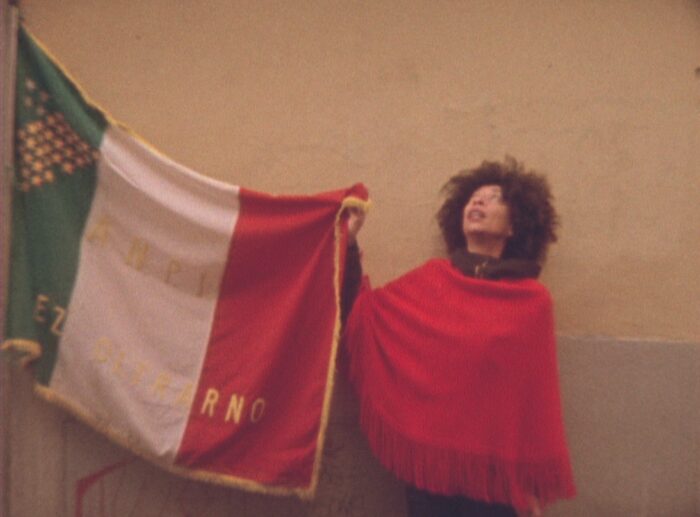
Minted in Enemy Bronze
Minted in enemy bronze. Coined in the reshaped minerals of those positioned as antagonistic. Over the past decade, a non-studio practice has emerged in my work dedicated to rethinking the shifting of language through implied antagonisms and movement beyond those aesthetics and materials canonized as public forms of collective memory. The practice speaks to the reclaiming of iconography repurposed from its utility in the construction of a seemingly linear projection of power and dominance, from the winged victory of Roman invasion to the angel of Christianity’s victory over mortality.
The practice grapples with all of those triggering histories and contemporary realities that shape our relationship to each other and that attempt to position Black history in the Italian context as merely four decades old. The psycho-spiritual excavation of thousands of years of Black presence on this land and the restitution of these dimensions and perspectives of history to the present are only part of what is enacted within and beyond the small lens of a 50-year-old super8 camera. Walter Rodney calls upon intellectuals of African descent to engage in “groundings” with each other and with a broader range of “the masses”. These exchanges of truth telling, of critical opposition, of repose from the grips of an oppressive system, of shared trauma, of non alignment, are central to the site based film work that has resulted from the initiation of this practice. The co-travellers, the soothsayers, all of those who have passed time with me have been reflectors of the tensions that exist just beyond the elaborately constructed facades of a hegemonic vision of Italianness that refuses to recognize its fragility induced fear.
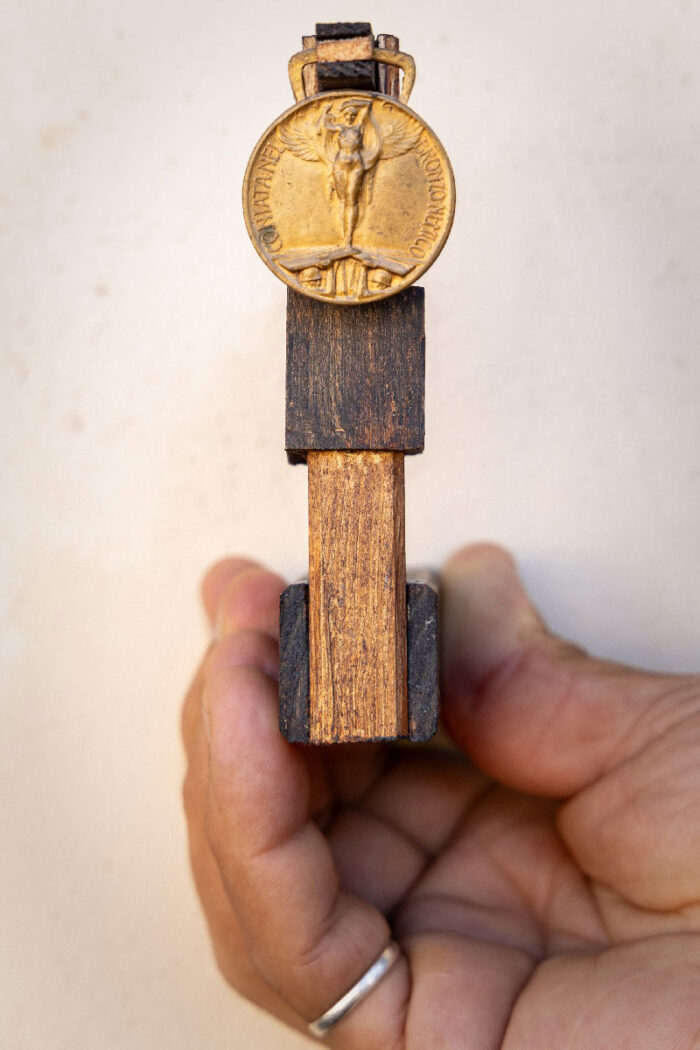
In a moment of time where the politics of comfort in relation to those recipients of daily structural racism and violence has positioned safety as an objective, trigger warnings rest alongside institutional blanket statements, both fortified mechanisms of defense. These gestures, when situated within sites of intellectual development, education and scholarship; environments fraught with insensitivities and unchecked gatekeeping, often disregard the triggering nature of daily existence in relation to these very structures. When the trigger is pulled on a film camera all that takes place beyond its limited range of vision, its depth of field, is embedded in the space itself, in the bodies that occupied, have occupied and will occupy that space, in the exchange and in the experience of those who where there to bear witness.
The history of violence and subjugation has consistently engaged in the appropriation, translation and transference of one thing into another. Re-assigning value, displacing ancestral cultural knowledge and often employing the very materiality that has been claimed itself as a tool for the destruction and obscuring of origins. This has involved the placement of looted objects, including the very weapons, talismans and armor used to defend against colonial invasion as museum displays dedicated to narrating cultural distinctions and hierarchies. This has also happened through the guise of the deadening of land and of the Earth’s mineral resources and their alteration into materials employed to commemorate, monumentalize and fix into eternity, marble or bronze positionings grounded in the arrogance of permanence and the veneration of power. This vision of artistic practice in the public space, this use of the public arena to place visual markers and reminders of domination, are anchored in a carefully constructed single or double point perspective, always upheld by mathematic or scientific principles. These physical markers of history are just the surface of a worldview and cultural insistence that has permeated into an atmospheric tension so extensive that its hold can seem indelible. An insistence on the replication of material and formal elements towards the uplifting of those individuals and thoughts that are our points of reference, that exist as visual push back to those monumental histories of violence, may not be the only response to what has been accepted as the preordained approach to public memory. Perhaps precisely because they exist as a responses, re-affirming the antagonisms, we need to consider other forms of legacy work that center the exchange between individuals capable of disseminating thought, care and memory in a way that is responsive to the daily, and perhaps hourly, shifts in atmospheric tension. Forms, templates, methodologies and practices need urgently to be sought out that reject the use of the masters tools, that seek a different relationship to the Earth itself, to each other, to memory.
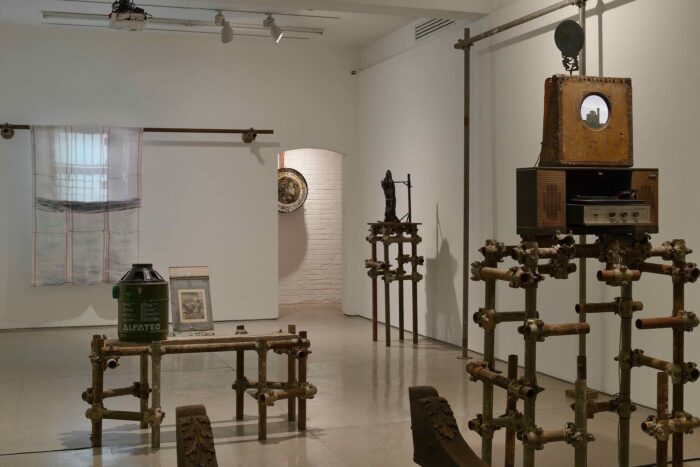
Striations embedded in stone are the results of tension and stress. In geological terms, they are the trappings of atmospheric tension. Their wandering marks are often beautiful on the surface but result from extreme pressure. How might we engage in considering all of those tensions and pressures not crystalized, not recorded and which have evaded the record? Those histories that have been removed, displaced or reconstructed through a façade that supports those who for centuries have been applying the pressure. What role might a reconfigured stance in relation to what is ordained “the archive” have on all of this? Text driven film works call upon an archive that, when employed as collage, alter notions of temporality, embrace text for its relation to orality and unsettle any trust we may place on sources along with any reliance that these words have on context.
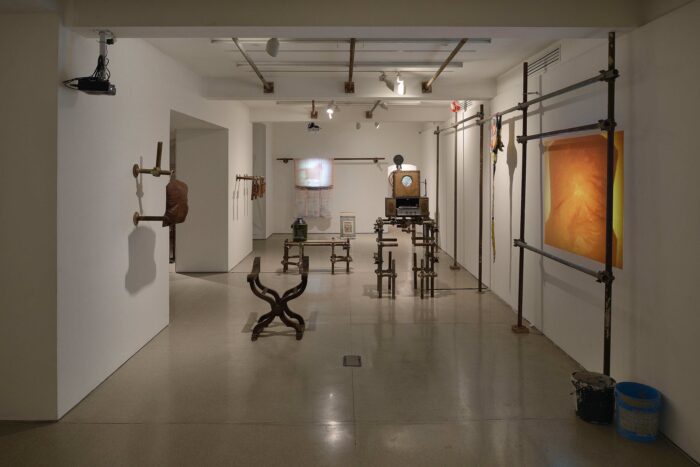
The sonic environment created in conversation with the performed silence of moving image can be a reminder of the power of the ethereal, the impermanent and its capacity to shape and dictate our relationship to what we see, to what we read. The sound waves themselves moving the air particles and injecting new tension into the atmosphere, occupying space while resisting permanance. The practice of Minted in Enemy Bronze is a recognition of all of those material forms that, never losing their mineralogical origins are reclaimed and recycled in an endless merry-go-round of ownership and authorship that is insensitive to all those unclaimed and intangible measures that have always existed beyond the calculated perspective of claims of cultural epistemicide.




